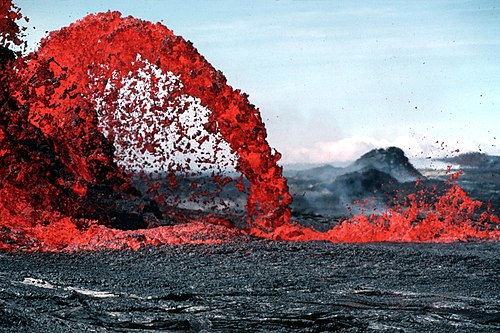Magmanoun
(geology) The molten matter within the earth, the source of the material of lava flows, dikes of eruptive rocks, etc.
Magmanoun
(mathematics) A basic algebraic structure consisting of a set equipped with a single binary operation.
Magmanoun
Any soft doughy mass.
Magmanoun
The residuum after expressing the juice from fruits.
Magmanoun
Any crude mixture of mineral or organic matters in the state of a thin paste.
Magmanoun
A thick residuum obtained from certain substances after the fluid parts are expressed from them; the grounds which remain after treating a substance with any menstruum, as water or alcohol.
Magmanoun
The molten matter within the earth, the source of the material of lava flows, dikes of eruptive rocks, etc.
Magmanoun
The amorphous or homogenous matrix or ground mass, as distinguished from well-defined crystals; as, the magma of porphyry.
Magmanoun
molten rock in the earth's crust
Magma
Magma (from Ancient Greek μάγμα (mágma) 'thick unguent') is the molten or semi-molten natural material from which all igneous rocks are formed. Magma is found beneath the surface of the Earth, and evidence of magmatism has also been discovered on other terrestrial planets and some natural satellites.
Lavanoun
The molten rock ejected by a volcano from its crater or fissured sides.
Lavanoun
Magma.
Lavanoun
A shade of red, named after the volcanic lava.
Lavanoun
The melted rock ejected by a volcano from its top or fissured sides. It flows out in streams sometimes miles in length. It also issues from fissures in the earth's surface, and forms beds covering many square miles, as in the Northwestern United States.
Lavanoun
rock that in its molten form (as magma) issues from volcanos; lava is what magma is called when it reaches the surface
Lava
Lava is molten rock (magma) that has been expelled from the interior of a terrestrial planet (such as Earth) or a moon. Magma is generated by the internal heat of the planet or moon and it is erupted as lava at volcanoes or through fractures in the crust, usually at temperatures from 800 to 1,200 °C (1,470 to 2,190 °F).




















